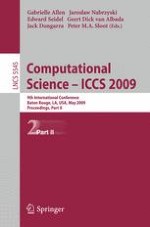“There is something fascinating about science. One gets such wholesale returns of conjecture out of such a tri?ing investment of fact. ” Mark Twain, Life on the Mississippi The challenges in succeeding with computational science are numerous and deeply a?ect all disciplines. NSF’s 2006 Blue Ribbon Panel of Simulation-Based 1 Engineering Science (SBES) states ‘researchers and educators [agree]: com- tational and simulation engineering sciences are fundamental to the security and welfare of the United States. . . We must overcome di?culties inherent in multiscale modeling, the development of next-generation algorithms, and the design. . . of dynamic data-driven application systems. . . We must determine better ways to integrate data-intensive computing, visualization, and simulation. - portantly,wemustoverhauloureducationalsystemtofostertheinterdisciplinary study. . . The payo?sformeeting these challengesareprofound. ’The International Conference on Computational Science 2009 (ICCS 2009) explored how com- tational sciences are not only advancing the traditional hard science disciplines, but also stretching beyond, with applications in the arts, humanities, media and all aspects of research. This interdisciplinary conference drew academic and industry leaders from a variety of ?elds, including physics, astronomy, mat- matics,music,digitalmedia,biologyandengineering. Theconferencealsohosted computer and computational scientists who are designing and building the - ber infrastructure necessary for next-generation computing. Discussions focused on innovative ways to collaborate and how computational science is changing the future of research. ICCS 2009: ‘Compute. Discover. Innovate. ’ was hosted by the Center for Computation and Technology at Louisiana State University in Baton Rouge.
